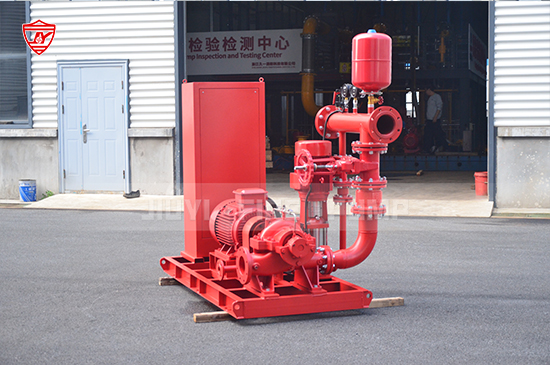As temperatures drop, outdoor fire pump installations become vulnerable to freezing — leading to costly damage and system failure. Proper winterization is essential to maintain operational readiness and compliance with fire safety codes.
Here’s a practical guide from JIUYI FIRE PUMP, your trusted fire pump manufacturer, on how to protect your fire pump system during the winter season.

Standing water in pipes and fittings can freeze and expand, causing cracks and leaks. Drain all sections not required for operation, especially test headers, hose valves, and auxiliary piping.
Use weather-resistant insulation to cover exposed pipes, pump casing, controllers, and valves. For added protection, consider installing heated enclosures for outdoor pump rooms or units.
Install heat tracing along critical lines to maintain above-freezing temperatures. These systems automatically regulate temperature and are ideal for zones with prolonged sub-zero conditions.
If your fire pump is installed in an exterior pump house, ensure reliable space heating is available and functioning correctly. NFPA 20 requires maintaining a minimum of 40°F (4°C) inside the pump room.
Cold weather can reduce battery capacity and affect diesel performance. Check the battery charge and use winter-grade fuel to avoid gelling. Block heaters may be installed for engine warmth.
Weekly run tests and visual inspections are even more critical in winter. Monitor pump performance, heating systems, and any signs of frost or condensation.
For certain sprinkler systems, antifreeze loops may be required. However, always ensure compatibility with local codes and pump materials.
A frozen fire pump system can fail in an emergency—putting lives and property at risk. Proper winterization ensures compliance with NFPA 20 standards, extends equipment life, and secures system reliability.